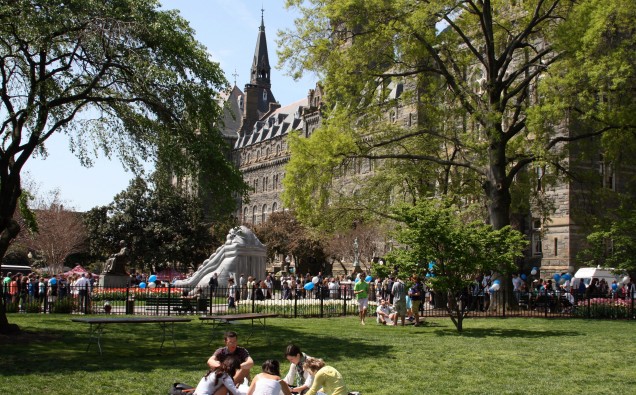
A new study has asked the Federal Reserve to keep the interest rates low until full employment is achieved as those graduating from schools and colleges in 2016 confront lackluster growth in wages due in part to sustained economic weakness in the wake of the Great Recession of the previous decade.
The Fed in December raised the rate for the first time since 2006 after the economy showed signs of growth but has kept the rates on hold at 0.25-0.5 percent since over worries about global growth, mainly due to slowdown in China and continuing depression in global oil prices. Some have expressed the view rates can be hiked in June.
According to the report by the Economic Policy Institute, the current higher levels of unemployment and underemployment do not have a solution unique to them and the most direct way to bring down unemployment rate is to spur wage growth of young workers by instituting measures that would boost aggregate demand and encourage full employment.
“We should use all tools of macroeconomic stabilization policy to pursue full employment,” the report said. “Most immediately, this means the Federal Reserve can help by keeping interest rates low until full employment is achieved.”
The rates may stay at the existing rates after the latest data showed the U.S. economy expanded in the first quarter at the slowest pace in two years.
“In order to spur wage growth, we must pursue policies that strengthen workers’ collective bargaining rights, as well as update and strongly enforce labor standards. In particular, we should rise the minimum wage, update the overtime threshold, provide earned sick leave and paid family leave, provide undocumented workers a path to citizenship, and end discriminatory practices that contribute to race and gender inequities.”
The study looks at the trends in unemployment, underemployment and wages of young high school and college graduates to see what is in store for the Class of 2016 – the high school and college students graduating this year.
The report shows that unemployment rate of young graduates remain at elevated levels. The unemployment rate among college students is currently 5.6 percent and those underemployed are 12.6 percent. For young high school graduates, the unemployment rate is 17.9 percent, compared with 15.9 percent in 2007 – before the recession struck. The underemployment rate among high school graduate is 33.7 percent up from 26.8 percent in 2007.
The high rates of unemployment and underemployment among young college students emanate from weak demand for goods and services, due to which employers don’t feel need to ramp up hiring. Those rendered “idled’ by the economy have neither enrolled in further schooling nor have employed.
“This indicates that many graduates are unable to take the two main paths – receiving further education or getting more work experience – that enable future career success,” the study says.
The report indicates yet another aspect that unemployment rates of young black and Hispanic graduates are substantially higher than the unemployment rates of white non-Hispanics, for both young high school graduates as well as young college graduates.
Young black college graduates currently have an unemployment rate of 9.4 percent – higher than the peak of unemployment rate of 9.0 percent for young college graduates during the recession that struck in 2007 and officially continued till middle of the 2009.
Even those who get jobs are facing the prospects of lackluster growth in wages in part due to continuing weakness in the economy in the wake of the Great Recession.
On average, young college graduates have an hourly wage of $18.53 – an annual salary of about $38,500 for a full-time, full-year worker. This is nearly the same as what a typical college graduate would have earned in 2000. As compared to that the average college cost rose between 69.0 percent for a public university and 42.9 percent for private schools.
On average, young high school graduates had an hourly wage of $10.66 in 2016. This wage rate would yield an annual income of roughly $22,200 for a full-time, full-year worker. Although, colleges graduates earn more than of their high schools counterparts, their wages fall short of amount needed to repay their loans, thus leading to rising levels of debts.
The report cites the rising cost of higher education as one likely reason of stagnant level of college enrollment as students and families find it impossible to pay for college.
The total cost averaged $24,061 in 2015-16 school year for those attending an on-campus student – including in-state tuition, books, room and board, and transportation expenses – at a four-year in-state public school, according to the study by the Economic Policy Institute. . For a four-year private school, it was $47,831.
The increase in cost of higher education has outpaced rise in typical family income, making it harder for parents to pay for college. Tackling rising student debt has been one of the popular electoral slogans in the 2016 presidential race as candidates try to woo disgruntled voters, burdened with economic hardship.













